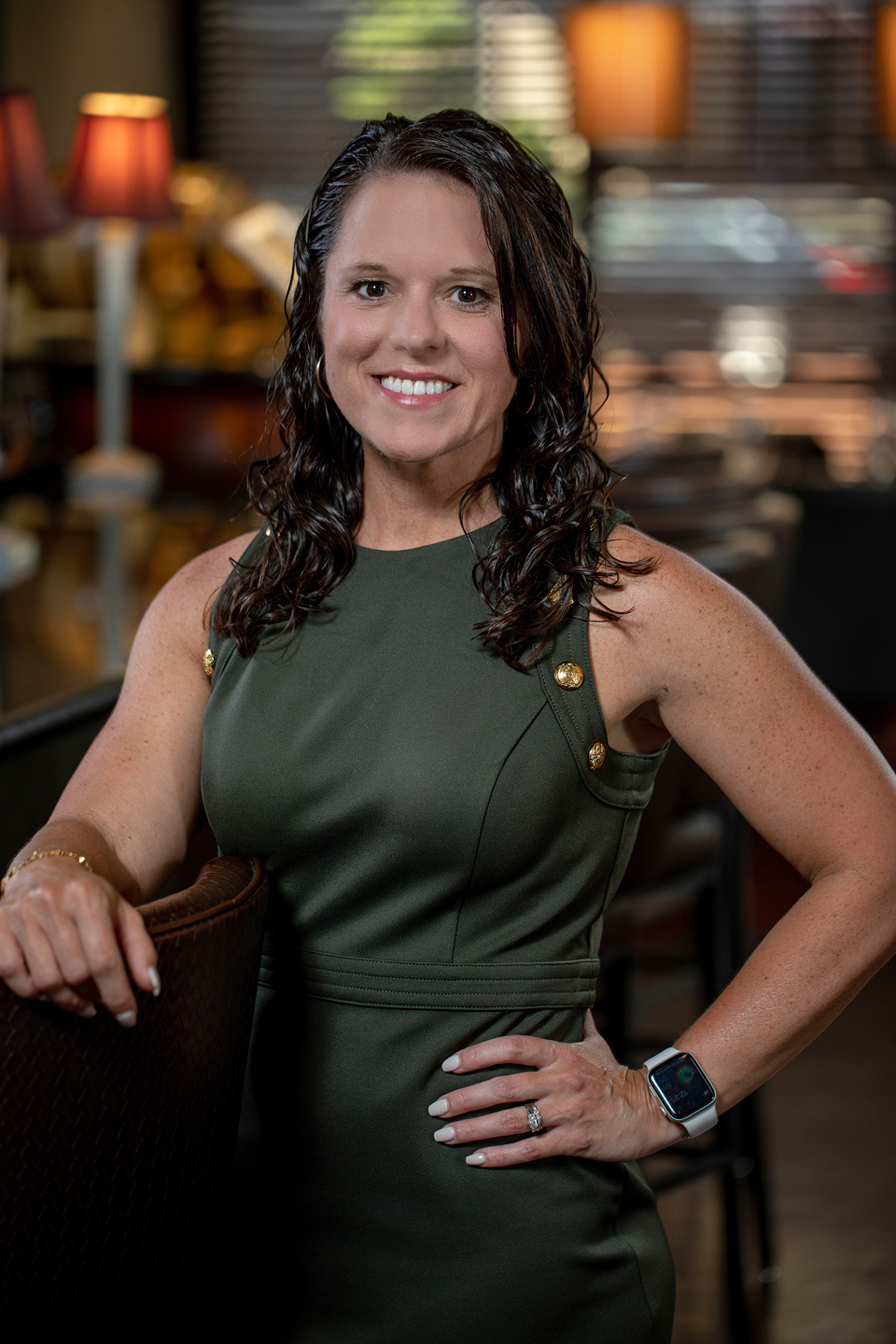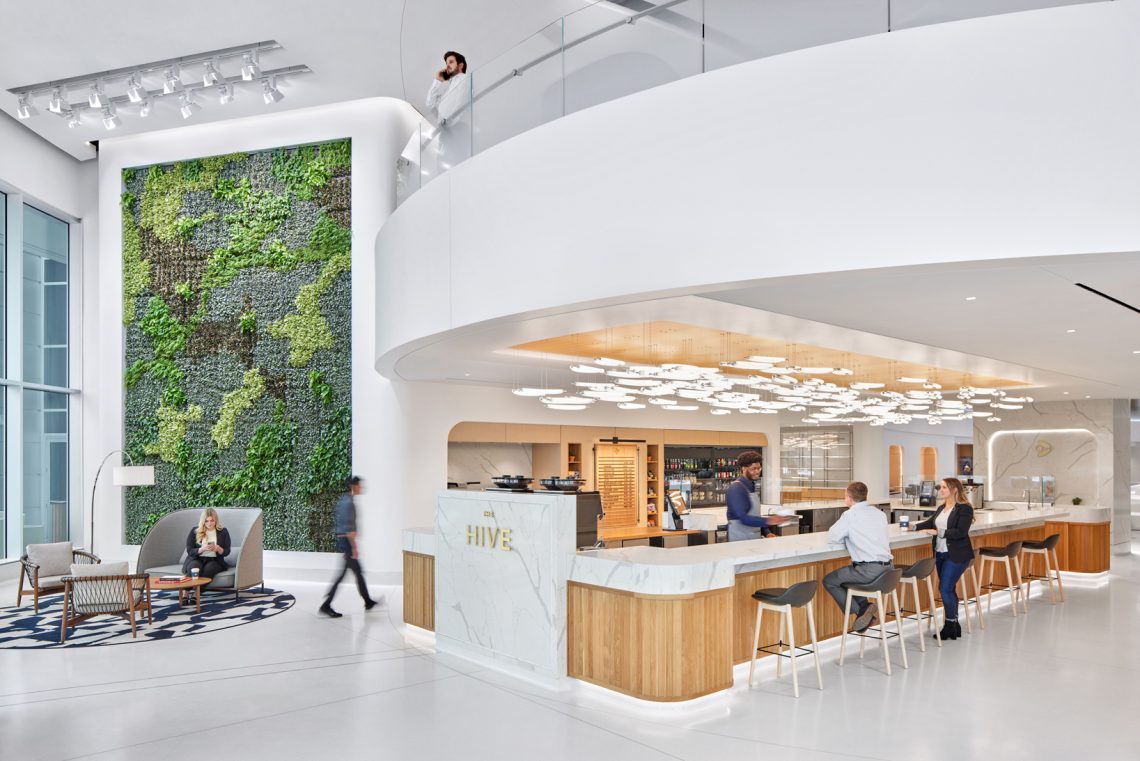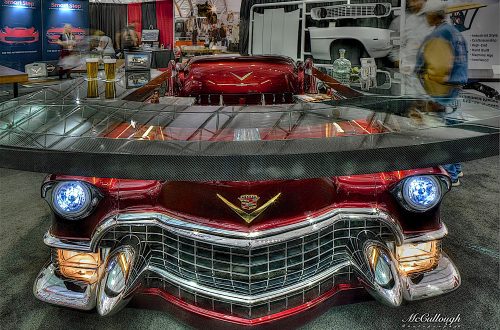Director of Architecture
Ghafari Associates | Dearborn, Michigan
To Rebecca Barry, AIA, NCARB, Director of Architecture at Ghafari Associates headquartered in Dearborn, Michigan, every built space has a story behind it. It is a story that can speak to the people, the culture, and the context around it, the mission and programmatic goals of an organization, and a celebration of ingenuity, creative problem solving, and the history and lessons learned in an ever-evolving dynamic field. There is a social responsibility in the crafting of it, and for Barry, it is a rewarding experience to be able to help play a role in shaping it and in inspiring future generations of creatives to dream up of what is possible for the built landscape.

“I think it is important and necessary to consider where we have been when it comes to architecture, because understanding the history makes designing for the future possible. There are a lot of lessons learned. Architecture is very dynamic, it is ever evolving, and we’ve proven the ability to push the boundaries in everything that surrounds us. It exemplifies the values and the culture of a society; it has proven to identify different artistic styles and really the advancement of us as people,” Barry said.
“To me, we have to keep pushing boundaries though. People change, influences change, lifestyles are changing, and we have to constantly evolve and explore new ways to transcend that. We have to look for ways to inspire the next generation of whatever their built environment wants to be,” Barry added.
Barry, who leads the Dearborn-based architectural team in her current role as Director of Architecture, providing project coordination, production oversight, quality assurance, and mentorship—a priority she wholeheartedly believes in—has spent nearly 25 years building a professional career in the field, and related fields, of architecture. Initially foraying into the mechanical and electrical engineering industry as a draftsman at BST Associates in Bingham Farms, Michigan, Barry then took on multifaceted project manager roles at architectural design and planning firms, like GAV & Associates Inc. and Nudell Architects in Farmington Hills, Michigan. Over the years, she worked with clients across industrial, commercial, retail, and healthcare sectors, and oversaw project design, construction documentation, client relations, project coordination, and construction administration. It was experience she felt equipped her well for moving into a project architect role with Ghafari roughly 13 years ago.
“I realized pretty quickly what those smaller firms were able to offer me, and the experience was great. I think working for smaller organizations allowed me to wear many hats that I probably would not have worn otherwise, so I felt like I was really equipped and well-rounded to take a leap further, which is why I decided to move on to Ghafari. The draw to Ghafari, specifically, was the size of the company, the type of projects that they were focused on, and it is a global organization. It is more of a corporate environment, which I felt I would thrive in,” Barry said.
“I’m a very structured person and I just thought this would offer me more of an opportunity to grow and to be involved. Ghafari is also known for its diversification and our outreach to several different markets in the architectural industry, so it keeps me on my toes, and that was kind of the initial draw. It still keeps me entertained today,” Barry added.
While Barry said her academic study was more technical in nature, which led her down this more technical pathway, it is her love of the arts that initially drew her to the field. She has fostered an ability to balance distinct technical and functional requirements with beautiful utility and thoughtful aesthetics, a passion for prioritizing the user, the environment and the cultural context, and an affinity for seeing architecture through the eyes of the architectural team she oversees. Barry noted that when she was first hired in as project architect, her responsibilities included running projects every day and as she has taken on new and different roles at the firm, it has become more about the people and the human element that inspires her each day.
“My design philosophy, especially today, really involves prioritizing environmentally friendly and energy-efficient design with a focus on minimizing the impact on the environment, and responding to and respecting the surrounding cultural context is key. My belief is that design should be influenced not only by the site, but the cultural aspects as well, and prioritizing the needs of the users is essential. In my opinion, when properly designed, the built environment should enhance the wellbeing of those who inhabit it. Overall designing for the quality of life and wellness seems absolutely critical to me these days,” Barry said.
“I have a lot of architects who are on my team, and I love having the ability to work with younger professionals, bringing them up through the ranks like I was brought up. I pride myself on mentorship, leading this team of people through their professional growth and just given the nature of my role now, it’s more centralized around people and that is where I enjoy the job in comparison to even when I stepped foot in the door at Ghafari 13 years ago. It’s just more people focused and I love that, because I’m really able to see architecture through their eyes,” Barry added.
In her professional career, Barry has worked in building programming and planning, construction document coordination and production, code review and analysis, and client relations across commercial hospitality, retail, government, and industrial markets—including leading the architectural component for all Ford Land work that would come through the firm. And credits a desire for the arts, a means of self-artistic expression, as the inspiration that drew her to architecture from a young age.
“I was probably in middle school and just really had a desire for the arts. As I grew older, I tried to understand where life would take me with having this natural draw to art, and as I got into high school and really needed to get serious about a career, I just had this vision of architecture and that would somehow relate to my willingness or desire to incorporate art somehow in my life,” Barry said. “My family’s background is also in construction and it just sort of made sense that I would mesh the two together.”
Driven by her desire to stay in an artistic field, Barry started taking mechanical drafting classes in high school, which served as her introduction to the field, and then went on to study architecture at Lawrence Technological University in Southfield, Michigan. While enrolled there, Barry earned a Bachelor of Science in Architecture and a Master of Architecture.
“There are other colleges that provide architectural degrees that are more theory-based, but for me, I somehow managed to route myself down a more technical path. I was in school for about five years, received my undergraduate degree and then I decided it was really important for me to become a licensed architect—not that it is a requirement to practice architecture necessarily—but it was something I strived for, so I moved on to my master’s program,” Barry said. “I ended up getting my master’s degree and after that I was really focused on obtaining my architectural license. I was at the point in my life where I got married, I was getting close to starting my own family, but it was really important to me to finish up my studies and reach that final destination, which was architectural licensure.”
Today, Barry holds architectural licensure in more than 15 states, is NCARB certified, and a member of the AIA. She was also recognized as a Crain’s Detroit Business Notable Women in Design. For Barry, who considers architecture a driver for many things in life, how architects respond to principles like function, aesthetics, culture, and the environment, has the power—and potential—to shape how individuals interact and what people are influenced by in life.
“As architects, we are responsible for envisioning and further executing the creation of everything that surrounds us and, in my opinion, we have a social responsibility to advocate and contribute to our built environment in a positive way. There has to be an emphasis spent on the environmental impact and it has to be more of a human-centric experience. I think we need to be innovative, but continue to embrace these types of principles,” Barry said.
“Maybe I am more sensitive to this now, because of the role I am in and how much of my job is dealing with people, but people are sensitive, and the requirements of people today are different. To me, good mental health, good physical health, is super important. Given the nature of how people are today and the things that we just know more about in terms of health and wellness, we have to design spaces and buildings to be more focused on this. I just don’t think it is something that we can push aside any longer,” Barry added.
Some of the other unique challenges facing the industry—which she considers an equally unique set of opportunities for the creative, problem-solving process—is the implementation of sustainable and energy-efficient design, the pace of technology, and a noticeable shift in recruiting and retaining talent. While she noted there seems to be an increasing pressure to incorporate sustainable principles in every project as architects strive to mitigate the effects of climate change, the pain point can be in educating or influencing a client to also see the value in investing in it. And, as a professional who has watched the industry evolve and adapt rapidly since the turn of the 21st century, Barry said one of her biggest questions as time moves forward is how architecture will grapple with the rapid advancement of technology and what project execution will actually look like in the future.
“It used to all be about augmented reality, virtual reality, and now it is about artificial intelligence. How do we find a way as architects to keep up with and find creative ways to integrate those technologies?” Barry said.
“I’m still young, I still have many years of career left in me, and I’m anxious, nervous, and excited to see where this industry is going. It is so different than when I started 25 years ago, I can’t even imagine what it is going to look like moving forward. It is going to be interesting to see where the industry goes and what our competition is doing, what is going to set us apart from other architectural firms, how are we designing our buildings, why are we designing our buildings, and how are we actually executing the project work,” Barry added.
Text: R.J. Weick
Photography: (gallery) John D’Angelo, Emre Dorter, Jason Keen, Tom Rossiter, Garrett Rowland, Courtesy of Ghafari Associates; (profile) M-Buck Studio LLC
First published in Great Lakes By Design: Architectonics, Volume 7, Issue 6






